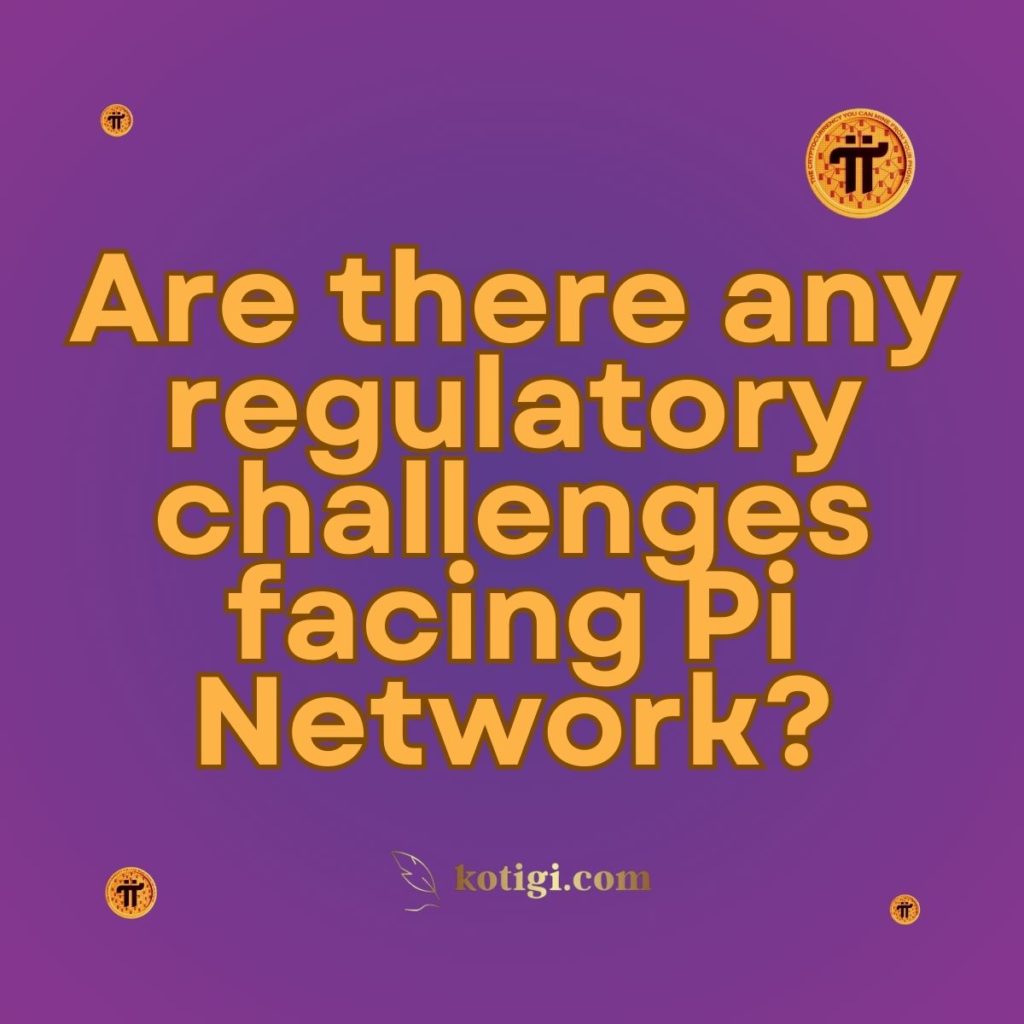
Are there any regulatory challenges facing Pi Network?
Yes, Pi Network faces several regulatory challenges that could impact its growth and operations. As a rapidly expanding cryptocurrency project, it must navigate a complex and ever-evolving regulatory landscape across different jurisdictions. Below are the key regulatory hurdles Pi Network is likely to encounter.
1. Navigating Diverse Global Regulations
1.1 Fragmented Cryptocurrency Laws
One of the primary challenges for Pi Network is the lack of consistent cryptocurrency regulations worldwide. While some countries have adopted progressive laws to accommodate digital currencies, others have taken a more restrictive approach, creating a complex environment for global compliance. This inconsistency means Pi Network must tailor its operations to meet the unique legal requirements of each jurisdiction, which can be both costly and time-consuming.
1.2 Uncertain Regulations in Emerging Markets
In regions where cryptocurrency regulations are still developing, Pi Network may face legal uncertainties. Emerging markets often lack clear guidelines, making it difficult for Pi Network to predict and prepare for regulatory changes that could affect its operations and user adoption in those areas.
2. Token Classification and Legal Implications
2.1 Risk of Being Classified as a Security
A significant regulatory challenge Pi Network could face is the potential classification of its tokens as securities. If regulators, particularly in major markets like the United States or Europe, classify Pi tokens as securities, the project would be subject to stringent securities laws. This could include requirements for registration, transparency, and investor protections, which could limit the project’s operational flexibility and increase its regulatory burden.
2.2 Implications of Utility vs. Investment
The legal classification of Pi tokens hinges on their utility. If they are seen as investment products rather than functional tokens within the Pi ecosystem, they may attract more regulatory scrutiny. This would likely involve additional compliance requirements under financial regulations, complicating Pi Network’s global strategy.
3. Compliance with Anti-Money Laundering (AML) and Know Your Customer (KYC) Regulations
3.1 Meeting AML/KYC Requirements
As Pi Network evolves, particularly with the potential for exchanging tokens for fiat or other cryptocurrencies, it will need to comply with stringent AML and KYC regulations. These rules require the verification of user identities and monitoring of transactions to prevent money laundering and other illicit activities. Implementing these processes can be complex and resource-intensive, especially for a decentralized network like Pi.
3.2 Global Compliance Coordination
Pi Network faces the challenge of implementing AML and KYC protocols that meet the diverse regulatory requirements across different countries. This global coordination effort is significant, as failure to comply with local regulations could lead to penalties, operational restrictions, or loss of trust among users.
4. Taxation and Reporting Challenges
4.1 Complex Tax Obligations
The tax treatment of Pi tokens varies by country, with some jurisdictions treating them as property, others as currency, and some as securities. This creates complex tax obligations for Pi Network users, particularly when dealing with cross-border transactions. Ensuring that users understand and comply with these obligations is a critical challenge for the network.
4.2 Increased Scrutiny and Reporting Demands
As Pi Network continues to grow, it will likely face increased scrutiny from tax authorities, which may result in more stringent reporting requirements. Complying with these requirements across multiple jurisdictions will require significant legal and accounting resources, adding to the project’s operational costs.
5. Consumer Protection and Legal Risks
5.1 Adhering to Consumer Protection Laws
Consumer protection laws are increasingly important in the cryptocurrency sector, and Pi Network must ensure that it complies with these regulations. This involves providing clear and accurate information about the risks associated with using the network. Non-compliance could lead to legal actions, financial penalties, and damage to the network’s reputation.
5.2 Legal Risks Across Jurisdictions
Operating in multiple countries exposes Pi Network to various legal risks, including potential lawsuits, regulatory fines, and the need to adjust operations to meet local compliance requirements. Successfully managing these risks will require a robust legal strategy and adaptability to changing legal environments.
Conclusion
Pi Network faces a range of regulatory challenges, from navigating global legal inconsistencies to ensuring compliance with complex financial regulations. Addressing these challenges is crucial for the project’s sustainability and growth, as it continues to expand its reach in the dynamic cryptocurrency landscape.





